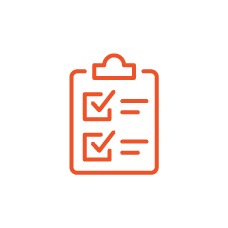This year can be marked as a turning point in our adoption of new technology. We are now moving from technology “buzzwords” like cloud-based computing and cloud services in general into tangible applications of these much spoken about technologies.
With the final months of 2020 upon us, a really interesting development this year has been that many hyped technologies from the past two years are finally coming to fruition. These are no longer buzzwords, but tangible technologies demonstrating true business value. Additionally, More and more businesses are developing their strategic technology roadmaps to create a clear vision and align goals for better business growth.
Let’s take a look at 10 of the most anticipated tech trends and how they are set to change, and improve, the way we do business.
1. The Enterprise Service Bus (ESB) gets cloudy.
The proliferation of cloud apps and services has sparked new levels of integration. Cloud integration and automation is the next frontier in usability and business intelligence. Check out this opinion piece on why the ESB is still relevant, but requires rethinking: elastic.io
2. Identity and access management from anywhere.
This year we saw the emergence of a new range of tools and services aimed at integrating identity management across cloud and mobile interfaces, by leveraging proven technologies such as Security Assertion Markup Language (SAML). Managed services offer flexible options that provide cost-effective solutions and tools to help you focus on your operational needs. Gartner predicts Identity and Access Management (IAM) will become a key differentiator in the enablement of innovative digital services, and is holding a summit on the trend later this year: gartner.com
3. Software defined (secure) networks (SDSN).
The term “SDN” has been used liberally in recent years, having found traction within the data centre. Extending this approach across the WAN and Internet leaves everyone thinking: “What about security?” Here is where SDSN comes to the rescue, offering a flexible approach to securing on-prem, cloud and hybrid applications and services. Discover more about SDSN here: networkworld.com
4. The Internet of Things (IoT), not just the fridge telling you it needs milk.
Here’s another popular buzzword that’s been floating around for a while: “IoT”. In 2017 IoT has started to become a reality, and for some a challenge, as it’s still in its infancy. With so many vendors shipping devices with wireless communication capabilities, and providers doing their utmost to commoditise the data recovered from sensors, the additional load this places on bandwidth and data storage is astounding. This year has regrettably highlighted just how insecure IoT can be and why we should tread carefully before accepting default security settings. Here’s a handy article that helps frame some of the challenges of IoT today, and in the future: networkworld.com
5. The maker revolution.
This combines digital design and manufacturing to enable anyone to assemble or make their own physical products. The technology to make something, combined with accessible online sales distribution services, means anyone can enter the manufacturing industry. This video interview with maker commentator, Chris Anderson, has some great insights: makezine.com
6. Blockchain.
Powering the ever-fluctuating crypto-currency, Bitcoin, blockchain works like a distributed database that can be used to transact securely across the Internet. With the crypto-currency war well underway, who will be the winner? Whoever can commoditise and integrate with the traditional financial systems first. Blockchain is already extending beyond the traditional use-case as evidenced in this article: pubpub.org
7. Systems management in a big sky.
This year we are seeing more emphasis on cross-platform systems management and cloud-based computing across clouds, servers, desktops and mobile devices. We’re finally arriving at a point where most clients can be managed centrally using cloud services. Tools like Microsoft’s System Center Configuration Manager can be deployed in the cloud to allow management from a single console. Microsoft keeps you updated on System Center Configuration Manager via its blog: technet.microsoft.com
8. HAL is here (AI is live).
2017 also brought with it the prospect of using “bots” for business process automation via artificial intelligence (AI). Watson has moved beyond winning Jeopardy, and now “chatbots” can enhance customer service interactions, including support queries, by pointing people in the right direction or making sure they are being given the most appropriate information at the time. See this opinion piece on how AI as the newest IT innovation is set to transform the customer: thenextweb.com
9. Autonomous vehicles.
Though not legal yet for use in Australia, we’re past the first hurdle of the self-driving revolution. More businesses than ever are investing in large-scale autonomous vehicle production and deployment: just look at mining sites. Read more: autoconnectedcar.com
10. Visualise everything.
We now have an abundance of local and cloud-based computing power to deliver visual representations against every business insight we desire. Virtual and augmented reality made big strides this year, and this is how we can expect to receive insights in the future. Here’s how virtual reality (VR) can disrupt data visualisation: disruptionhub.com
2017 saw many innovative technologies reach practical application and we’re excited about what’s in store for 2021.







